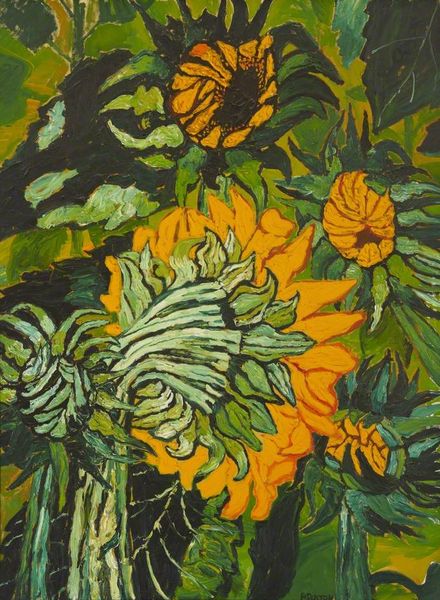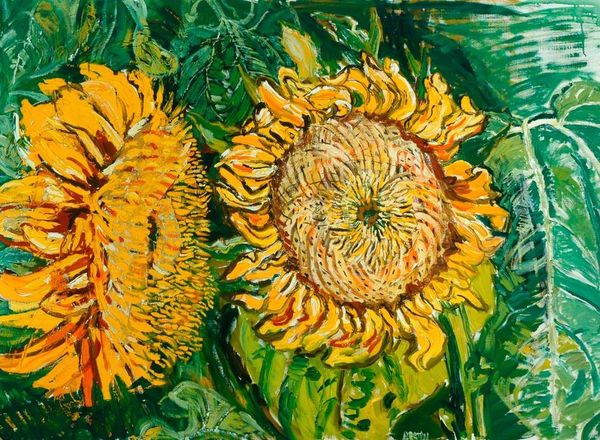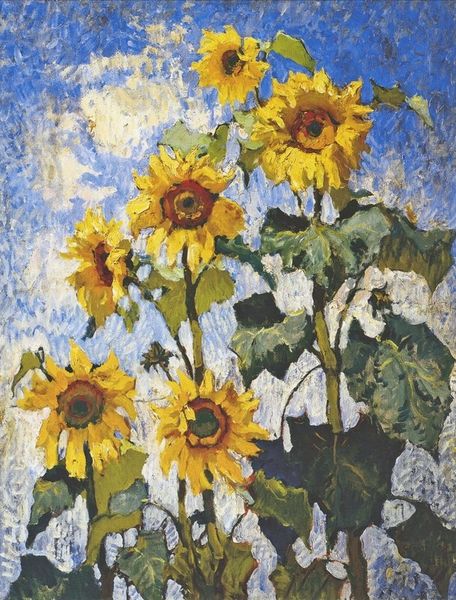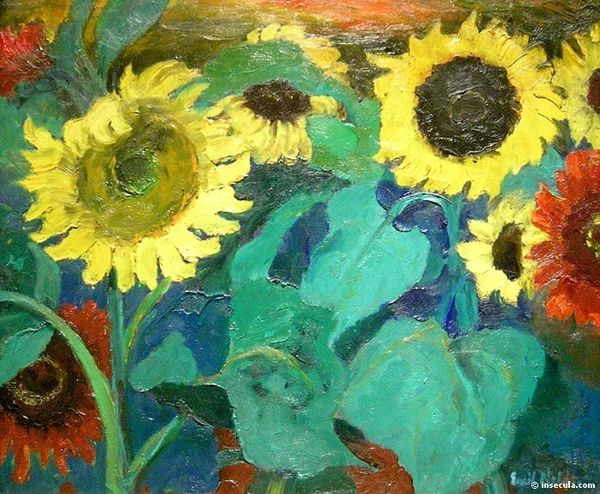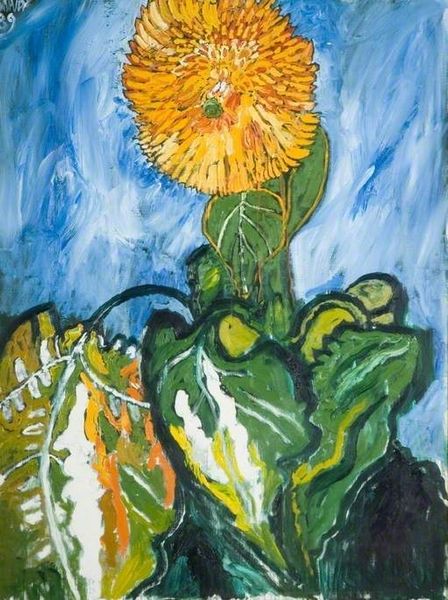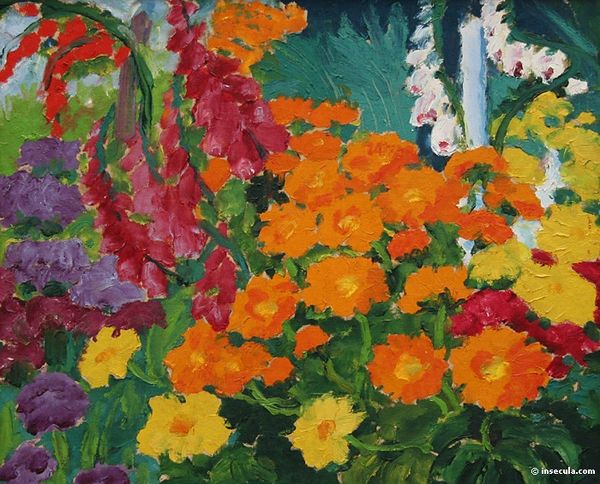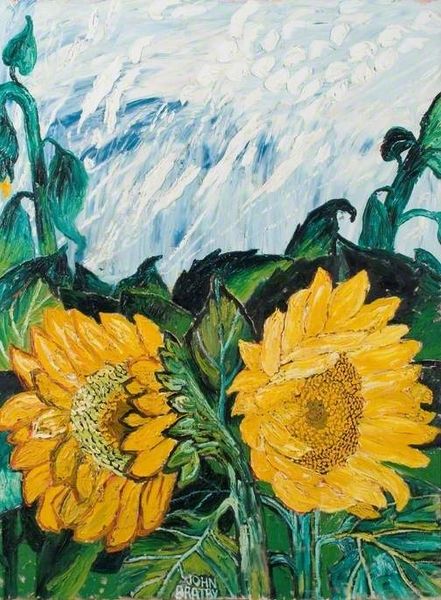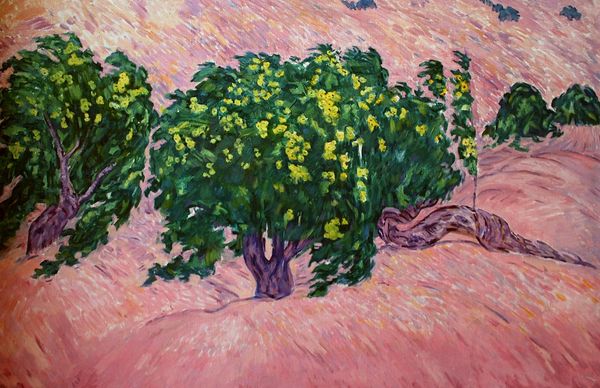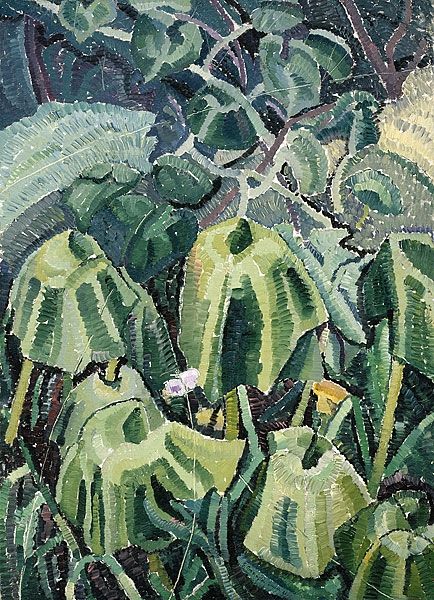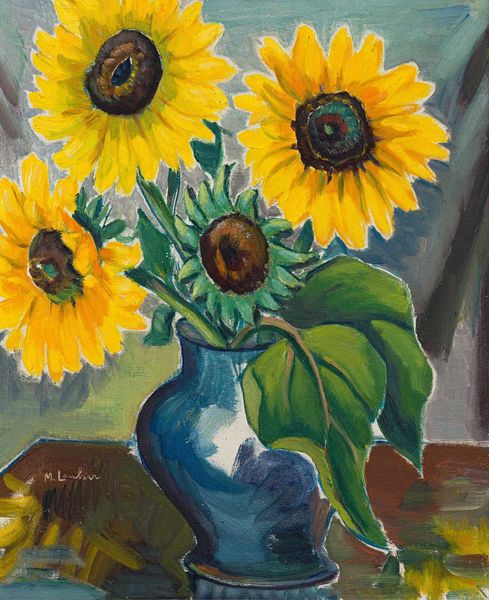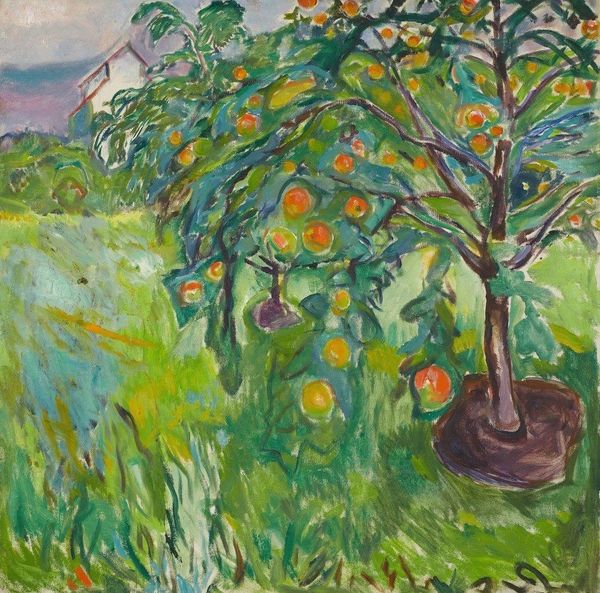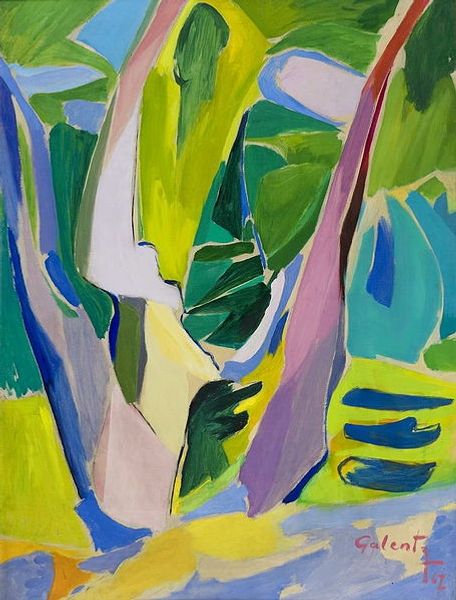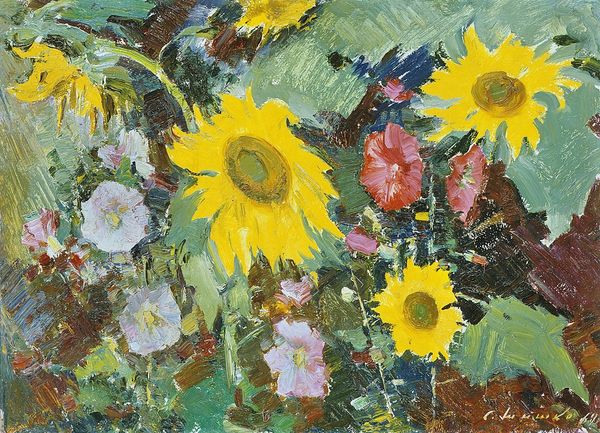
painting, oil-paint
#
fauvism
#
fauvism
#
painting
#
oil-paint
#
flower
#
expressionism
#
naive art
Copyright: John Bratby,Fair Use
Editor: We're looking at John Bratby's painting "Sunflowers," made with oil paint. The way the colours are applied so thickly creates an interesting texture. It gives me a slightly unsettling feeling because it's not perfectly representational. What do you make of it? Curator: Immediately, one notices the emphasis on materiality. Observe the impasto technique. The paint is not merely describing the sunflowers, it *is* the sunflowers, wouldn't you agree? The thickness and texture generate an experience. It draws your attention to the surface and away from any illusionistic depth. How does that textural quality influence your experience? Editor: It definitely makes me more aware of the painting as an object. I also noticed that while we expect sunflowers to have round faces, Bratby gives them really jagged edges, with sharp petals. Curator: Precisely! These distortions underscore a break from representational norms. Bratby focuses not on replication but rather on his medium's ability to generate emotional and aesthetic meaning. Look closely at how the vibrant yellow interacts with the green – it's almost discordant, forcing a reevaluation of our conventional notions of beauty in nature. How would you interpret this tension between vibrant color and discordant form? Editor: Maybe it is to express the more complicated and even slightly "ugly" sides of natural subjects. I find that it emphasizes the artificiality of painting itself. Curator: An astute observation. By rejecting idealization, Bratby acknowledges the artificiality inherent in the artistic process, thus revealing painting to be construction rather than faithful reproduction. This deconstruction, combined with its visual impact, invites a complex experience. Editor: This definitely shifted my perspective. Looking at the artwork in terms of color and composition as artistic statements in and of themselves opened up the artistic dialogue within the artwork. Curator: Indeed. Appreciating an artwork through formalism heightens awareness of how visual construction shapes aesthetic experience.
Comments
No comments
Be the first to comment and join the conversation on the ultimate creative platform.
